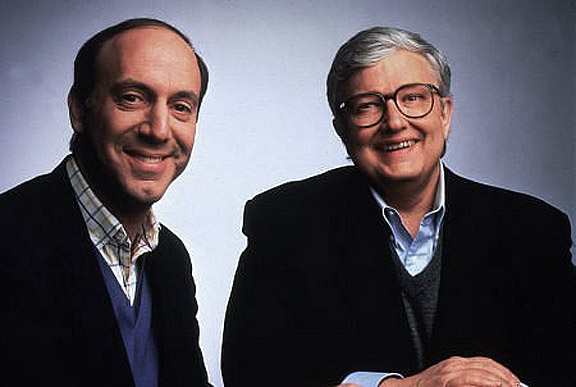The visuals and score of Alex Garland’s adaptation of “Annihilation” seek to unsettle. Even five years later, the film evokes a specific sense of impending doom, a creeping realization that what is will no longer be, and the fear that comes with the unknowable. When we think about the movie, we think of a monstrous bear that breathes a dying woman’s wail, flowers that bloom in tumorous groves, and Natalie Portman’s final dance of death. “Annihilation,” for all its hellish imagery, is transcendent with lush visuals that show off the painstaking efforts of an artist’s passion. It’s the score, however, that latches onto viewers the most.
“Annihilation”’s score spawns a sonic world that consists of acoustic guitars, an orchestra, some electronics, and a four-note motif. The natural becomes unnatural, and vice versa, as the characters adapt, self-destruct, and, ultimately, change into something new throughout the film. The film’s tension establishes itself visually, too, exemplifying the world’s wrongness with imagery of growth through decay, such as mutations of wildlife in a hostile environment. It’s in the framing of a decomposing victim of the Shimmer whose cells grow in intricate patterns along the wall where they died. It’s garish but hauntingly beautiful. That discordance in the imagery and the score is key to creating such taut unease.

For so much of “Annihilation”’s runtime, the score by Geoff Barrow and Ben Salisbury is an unreliable narrator that tricks us into the falsehood of believing the world Lena (Portman) has come from is the right one, the safe one, even as she contends with the battle for agency that can come through the absolution of self-destruction presented to her in the Shimmer. That destabilizing sense of wrongness in the midst of supposed normalcy and the creeping suspicion that what is before us has been altered adds to the mounting dread of the film. This dissonance triggers anxiety, encapsulating the sensation of tunnel vision, as musical cues and notes are in contention with one another.
The ability and hold that music has over viewers as a means to provoke a reaction isn’t new. There’s the obvious, such as themes from “Jaws” or John Carpenter’s score for “Halloween,” scores where a motif is weaponized to signify that danger is nearing. The works of David Lynch, “Eraserhead” in particular, play with sound design in ways that rattle bones, making us, like the lead, start to curl our shoulders in reaction to the mounting discomfort of ambient and buzzing sound—the sonic equivalent of an itch you can’t scratch.
Films such as “Akira” waste little time creating an immersive soundscape that keeps viewers on edge as we’re hit with waves of warring genres and instrumentation. Composed by the experimental collective Geinoh Yamashirogumi, the score marries inspirations from Noh music (traditional Japanese theater) as well as prog rock, Indonesian folk music, and more, as a way of making the consistent leitmotifs increasingly destabilizing. Fusing East Asian folk with symphonic choral works and club music puts to sound the film’s themes of requiem and oblivion.
“Uncut Gems” composer Daniel Lopatin (mastermind of Oneohtrix Point Never) created a similar sensation. His cosmic sound expression marries the film’s narrative’s pace with a ricocheting pulse, blanketing the dull roar of constant dialogue and the angry New York soundscape. The inevitability of the film’s conclusion might be a given, but the anxiety the score produces with its synth-focused design and rushes of noise settles at the start when we don’t know better.
As for “Annihilation,” the work of Barrow and Salisbury is a masterful understanding of these composition styles, as the greatest achievement in embodying anxiety through score alone is made by contorting an acute dissonance of sounds. “Annihilation,” to a degree even more than the aforementioned works, is a perfect example of how to sequence a score to mimic a panic attack.

Anxiety and I share a history.
I used to wake up believing the world had ended. Silent and gray, my childhood home became a tomb assembled by my wordless, humiliating fears. I’d lie awake, momentarily paralyzed, before checking on my parents, my sisters, and my pets, too, to make sure they were still alive.
My breath is so often stolen in these instances, each breath won through bartering. I was told young that the root of an anxiety attack was the sense of impending doom, no matter how inexplicable. What I came to learn was that I wasn’t so much terrorized by the apocalypse but by the panic that comes with the cold sweat effect of believing my world as I know it is ending. I will be struck speechless and motionless day after day for months at a time, believing that each and every time I survived was a fluke: today, the earth is on fire, the sky really is falling, and the sun will go dark. Anxiety, for me, is the fear that comes from knowing my brain is an unreliable narrator.
The inability to trust what my mind is telling me is part of what makes Garland’s “Annihilation” such an impactful viewing as it constantly reassembles itself. It captures the feeling of the gray 4 AM hour, where reality is so easy to question.
The world Garland has created inside this bubble, where a nuclear wasteland gives birth to sprawling green forests, visualizes impossible horrors, and even more spectacular visions of beauty. We watch as this meticulous, detailed world deconstructs itself. “Annihilation” is a visceral intuition of just what will set our hair on end and have us triple locking our doors to bar impossible creatures from gaining entry. Garland’s film refuses to leave you once it’s in every fiber of your being. Like a nightmare that bleeds into waking life, it follows you home. So much of what follows, though, isn’t just haunting imagery but jarring notes as well.

In the world of “Annihilation,” the Shimmer behaves like a prism. The sound design and score reflect this also with fragments of sounds and styles. It’s seen through the “echoes,” a theme heard throughout the film both in sound and design. The echoes are visualized through the tumors Lena first studies, and how they follow her molting into the Shimmer, to the abandoned house they camp at being identical to Lena’s home on the outside. The echoes are heard using a four-note motif that reverberates in different connotations throughout the film’s runtime, first just as an acoustic guitar and then, with greater urgency, an inhuman synth in the magnum opus titled “The Alien,” at the story’s end. Marrying the two creates greater trepidation as it causes a high-alert attitude as we seek out what is wrong within the world of the film—what we’re seeing or what we’re hearing.
“Annihilation” makes its declaration of what it is at its core in the very first notes of “Helplessly Hoping,” with deliberate discordance through the framing of using Crosby Stills and Nash’s song to paint a picture of naturalism before complete deconstruction so what we perceived as normal (a folk song) becomes false.
We rebuild, we mend, we fester, and grow. Through this lens of unstoppable change, the themes of mental illness are mighty and potent in the severity of their deliverance. Lena undergoes metamorphosis via self-destruction. She becomes both selves—who she is and who she fears. Each character must face a fate that plays with their real-life struggles. From Anya’s (Gina Rodriguez) addiction manifesting a death with a beast that wins to Josie’s (Tessa Thompson) acceptance of death which offers her a kind of new life as she willingly mutates into a plant, and Ventress’ disintegration of cells—a nod to how cancer is ravaging her body—“Annihilation” understands the unnerving experience of facing fears that live in us. The score doesn’t so much do the heavy lifting of these moments but instead, for greater impact, uses it to emphasize moments of despair lest we lose the human element.
Excellence bares itself through consistent play and fusion of sounds. In the most hypnotic moments, the score manages to toy with our understanding of these characters and their plights.
It’s why the entirety of the sequence within the shell of the Lighthouse is the most stirring. The score doubles down here. Up until now, it’s all been lead-up and mounting dread. Now the full sound is unleashed at its crescendo. Following Ventress’ death, the noise is vacuum-sealed as Lena watches the birth of her duplicate. It glitches back to life as Lena comes to. Its alien being is matched by extraterrestrial music. In the number “The Alien,” at the 2:40 mark, that pulsing sequence of notes created through synths and electronics rattles us as the camera shakes. At odds with the near balletic movements of Lena and her double, it’s an abrasive cue, disruptive of any flow or melody. Like the film and its message of conflating destruction with change, the composers defy the expected by twisting what we know into something mesmerizing in its terror, something eerie in delivery, something new.











